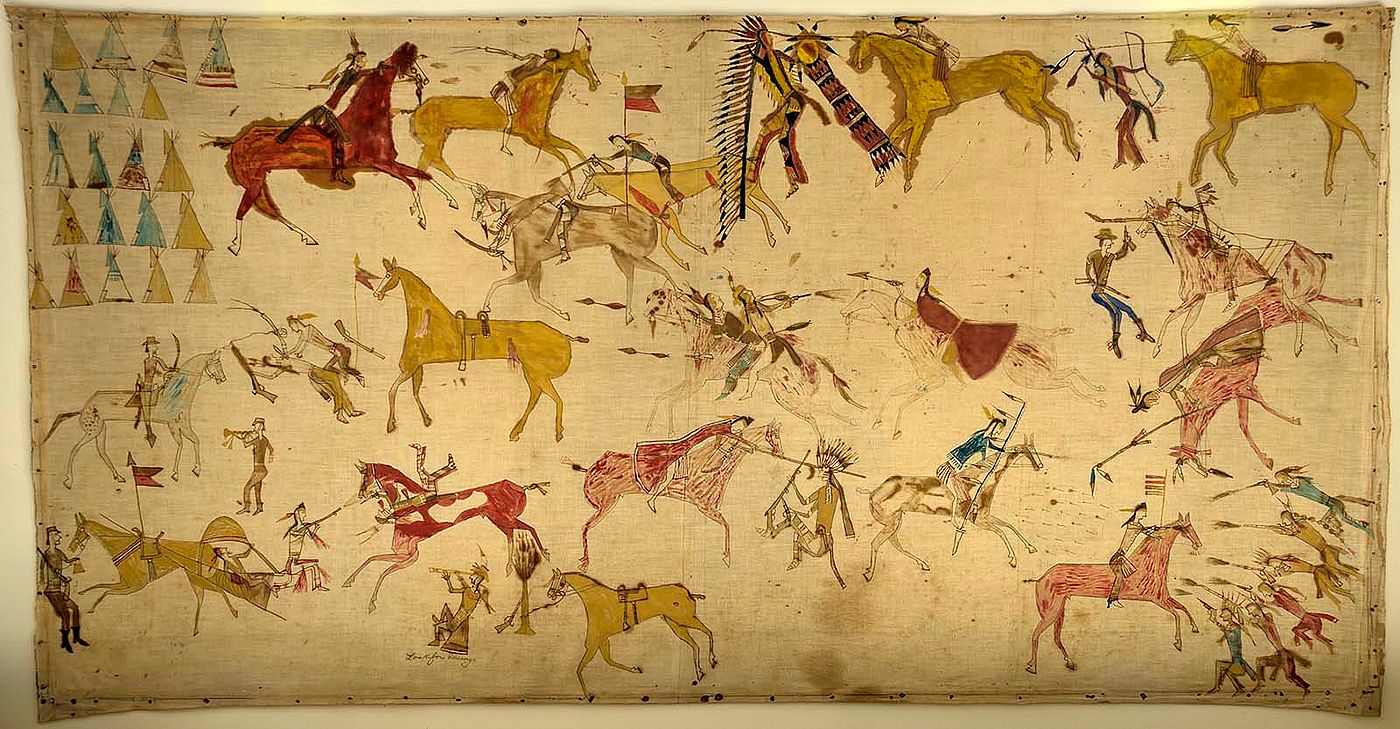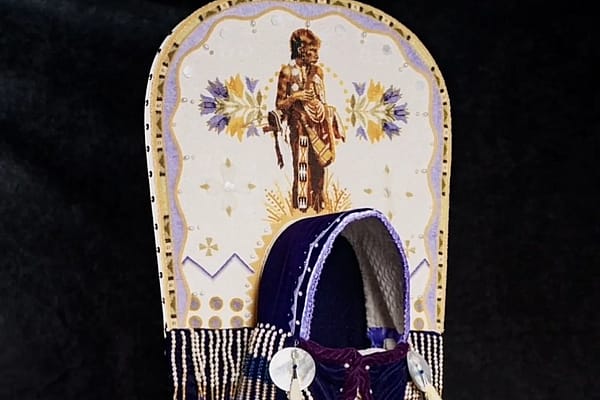
Treasures from Our West: Painting on muslin by White Swan
Originally featured in Points West magazine in Summer 2017
Painting on muslin by White Swan
Crow warrior and Army Scout White Swan was one of six scouts serving under the command of Lieutenant Colonel George Armstrong Custer during the two days of the Battle of Little Bighorn, June 25–26, 1876. White Swan was 25 years old when he fought alongside U.S. Army troops and Crow and Arikara scouts during Major Marcus Reno’s attack of the Indian camps near the Little Bighorn River. What occurred in the river valley and on the bluffs above—an unprecedented defeat of large and well-armed regiments of Army soldiers and their leaders—would change White Swan’s life, as well as American history. Because White Swan was an Army scout, military records documented his wounds. He was shot in the right hand, right knee, and thigh, and was struck in the head by a Sioux warrior’s weapon, rendering him deaf and mute for the rest of his life.
In the tradition of male Indian warriors and artists, White Swan recorded this and other momentous battles from his lifetime in a complex narrative, filled with movement and violence. The muslin became the voice and words for his graphic memories. The composition is arranged in three horizontal levels featuring clusters of individual battle scenes. Five of the scenes are thought to include Little Bighorn based on the presence of the Seventh Cavalry guidon, and various depictions of White Swan, who is identified by his distinctive red face paint, single eagle feather, traditional Crow hair style, and simple attire of either a shirt and leggings, or a red coat. His painting is one of few first-hand Native accounts of the Battle of Little Bighorn, yet is one of many complex historical perspectives of this event. White Swan’s muslin was recently on loan to Gilcrease Museum in Tulsa, Oklahoma, accompanied by his known artwork from other collections, for the exhibition Plains Indian Art: Created in Community, which ran through August 27, 2017.

Mee-nah-tsee-us (White Swan) (ca. 1851–1904). Apsaalooke (Crow), Montana. Painting, ca. 1887. Muslin, pencil, ink, watercolor, 37.25 x 70.5 inches. The Paul Dyck Plains Indian Buffalo Culture Collection, acquired through the generosity of the Dyck family and additional gifts of the Nielson Family and the Estate of Margaret S. Coe. NA.702.40
Post 190
Written By
Nancy McClure
Nancy now does Grants & Foundations Relations for the Center of the West's Development Department, but was formerly the Content Producer for the Center's Public Relations Department, where her work included writing and updating website content, publicizing events, copy editing, working with images, and producing the e-newsletter Western Wire. Her current job is seeking and applying for funding from government grants and private foundations. In her spare time, Nancy enjoys photography, reading, flower gardening, and playing the flute.










